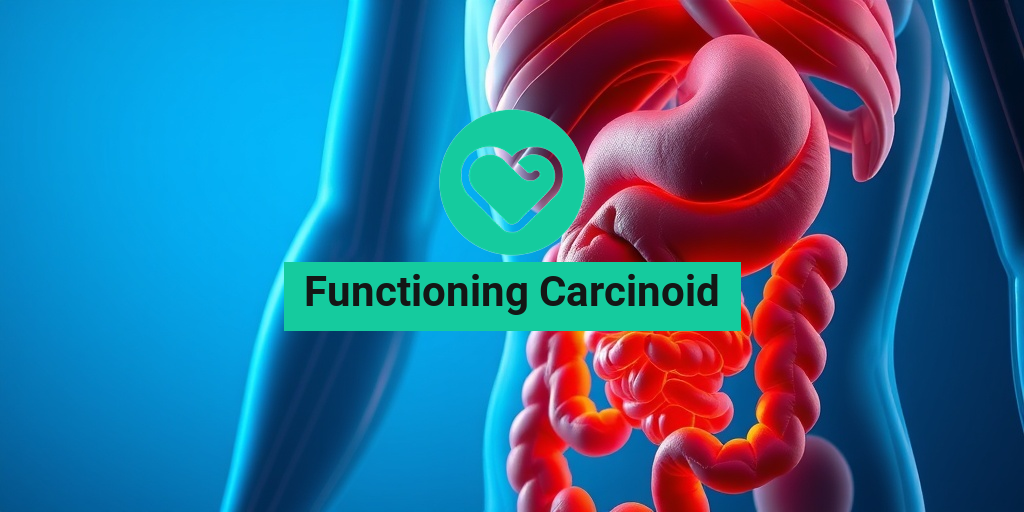What Is Cholinergic Urticaria?
Cholinergic urticaria is a specific type of physical urticaria, characterized by the appearance of hives or welts on the skin in response to an increase in body temperature. This condition is often triggered by activities that raise body heat, such as exercise, hot showers, or even emotional stress. The term “cholinergic” refers to the involvement of the neurotransmitter acetylcholine, which plays a crucial role in the body’s response to heat and stress.
Individuals with cholinergic urticaria typically experience a rapid onset of symptoms, often within minutes of exposure to a trigger. The hives can be small, itchy, and red, and they usually appear on the upper body, neck, and arms. While the condition can be uncomfortable, it is generally not life-threatening. However, it can significantly impact the quality of life for those affected.
Causes of Cholinergic Urticaria
The exact cause of cholinergic urticaria is not fully understood, but it is believed to be related to the body’s immune response. When the body temperature rises, the release of acetylcholine can lead to the activation of mast cells in the skin, resulting in the release of histamine and other inflammatory substances. This process triggers the characteristic hives associated with the condition.
Some common triggers include:
- Physical exercise 🏃♂️
- Hot baths or showers 🚿
- Emotional stress 😰
- Spicy foods 🌶️
- Sudden temperature changes 🌡️
Cholinergic Urticaria Symptoms
The symptoms of cholinergic urticaria can vary from person to person, but they typically include:
1. Hives (Wheals)
The most prominent symptom is the appearance of hives, which are raised, itchy welts on the skin. These hives can vary in size and may merge to form larger areas of swelling.
2. Itching
Along with hives, individuals often experience intense itching in the affected areas. This itching can be quite bothersome and may lead to scratching, which can worsen the condition.
3. Flushing
Some people may also experience flushing of the skin, particularly on the face and neck. This redness is a result of increased blood flow to the skin’s surface.
4. Burning Sensation
A burning sensation may accompany the hives, adding to the discomfort. This sensation can be particularly pronounced during or after physical activity.
5. Duration of Symptoms
The hives typically resolve within a few hours, but the duration can vary. In some cases, symptoms may persist longer, especially if the individual continues to be exposed to triggers.
When to Seek Medical Attention
While cholinergic urticaria is generally not dangerous, it is essential to consult a healthcare professional if you experience severe symptoms or if the hives do not resolve. In rare cases, cholinergic urticaria can be associated with more severe allergic reactions, so it’s crucial to rule out other conditions.
For those seeking more information about managing cholinergic urticaria and understanding its implications, resources like Yesil Health AI (yesilhealth.com) can provide evidence-based answers and support.
In conclusion, cholinergic urticaria is a manageable condition that can significantly affect daily life. By understanding the triggers and symptoms, individuals can take proactive steps to minimize their discomfort and improve their quality of life. If you suspect you have this condition, don’t hesitate to reach out to a healthcare provider for guidance and support. 🌟

Causes of Cholinergic Urticaria
Cholinergic urticaria, a type of physical urticaria, is characterized by the appearance of hives or welts on the skin in response to an increase in body temperature. This condition can be triggered by various factors, and understanding these causes is crucial for effective management. Here are some of the primary causes:
1. Increased Body Temperature
One of the most common triggers for cholinergic urticaria is a rise in body temperature. This can occur due to:
- Exercise: Physical activity can elevate body temperature, leading to the onset of hives.
- Hot showers or baths: Exposure to hot water can trigger symptoms.
- Environmental heat: Hot weather or being in a heated room can also be culprits.
2. Emotional Stress
Emotional factors play a significant role in cholinergic urticaria. Stress and anxiety can lead to an increase in body temperature and trigger hives. This connection between emotional well-being and physical symptoms highlights the importance of managing stress effectively.
3. Certain Foods and Beverages
Some individuals may experience cholinergic urticaria after consuming specific foods or drinks that can raise body temperature. Common triggers include:
- Spicy foods: These can cause a temporary increase in body heat.
- Alcohol: Alcohol consumption can lead to flushing and increased body temperature.
4. Infections and Illness
Infections, particularly viral infections, can also trigger cholinergic urticaria. The body’s immune response to an infection can lead to an increase in body temperature, resulting in hives. Additionally, illnesses that cause fever may also provoke symptoms.
5. Medications
Some medications can induce cholinergic urticaria as a side effect. Non-steroidal anti-inflammatory drugs (NSAIDs) and certain antibiotics are known to cause skin reactions in sensitive individuals. Always consult with a healthcare provider if you suspect your medication may be contributing to your symptoms.
Risk Factors for Cholinergic Urticaria
Understanding the risk factors associated with cholinergic urticaria can help individuals identify their susceptibility to this condition. Here are some key risk factors:
1. Age
Cholinergic urticaria is most commonly seen in young adults, particularly those between the ages of 18 and 30. However, it can occur at any age, and awareness of symptoms is essential for early diagnosis and management.
2. Gender
Research indicates that cholinergic urticaria may be more prevalent in males than females. This gender difference could be attributed to varying levels of physical activity and stress responses.
3. History of Allergies
Individuals with a history of allergies or other types of urticaria may be at a higher risk for developing cholinergic urticaria. If you have experienced allergic reactions in the past, it’s important to monitor any new symptoms that arise.
4. Family History
A family history of urticaria or other allergic conditions can increase the likelihood of developing cholinergic urticaria. Genetic predisposition plays a role in how the body reacts to certain triggers.
5. Physical Activity Level
Those who engage in regular physical activity may be more prone to cholinergic urticaria due to the frequent increases in body temperature. While exercise is beneficial for overall health, it’s essential to be aware of how it may affect your skin.
In conclusion, understanding the causes and risk factors of cholinergic urticaria can empower individuals to manage their symptoms effectively. By identifying triggers and being mindful of personal risk factors, those affected can take proactive steps toward minimizing outbreaks and improving their quality of life. 🌟

Diagnosis of Cholinergic Urticaria
Cholinergic urticaria, a type of physical urticaria, is characterized by the appearance of hives or welts on the skin in response to an increase in body temperature. This can occur due to exercise, hot showers, or even emotional stress. Diagnosing this condition can be challenging, but understanding the symptoms and the diagnostic process can help you seek appropriate care.
Recognizing the Symptoms
The first step in diagnosing cholinergic urticaria is recognizing its symptoms. Common signs include:
- Itchy hives: Small, raised welts that can appear anywhere on the body.
- Flushing: Redness of the skin, often accompanied by warmth.
- Burning sensation: A feeling of heat or discomfort in the affected areas.
- Timing: Symptoms typically occur within minutes of triggering activities, such as exercise or exposure to heat.
Consulting a Healthcare Professional
If you suspect you have cholinergic urticaria, it’s essential to consult a healthcare professional. They will take a detailed medical history and perform a physical examination. Be prepared to discuss:
- Your symptoms and their frequency.
- Any known triggers that lead to outbreaks.
- Your overall health and any other medical conditions.
Diagnostic Tests
While there is no definitive test for cholinergic urticaria, your doctor may conduct specific tests to confirm the diagnosis. These can include:
- Provocation tests: These tests involve exposing you to controlled heat or exercise to observe if hives develop.
- Skin prick tests: To rule out other types of allergies that may cause similar symptoms.
It’s important to note that cholinergic urticaria can sometimes be mistaken for other conditions, such as allergic reactions or other forms of urticaria. Therefore, a thorough evaluation is crucial for an accurate diagnosis.
Cholinergic Urticaria Treatment Options
Once diagnosed, managing cholinergic urticaria involves a combination of lifestyle adjustments and medical treatments. The goal is to reduce symptoms and improve your quality of life.
Lifestyle Modifications
Making certain lifestyle changes can significantly help in managing cholinergic urticaria:
- Avoiding triggers: Identify and steer clear of activities that provoke your symptoms, such as intense exercise or hot baths.
- Staying cool: Use fans, air conditioning, or cool showers to help regulate your body temperature.
- Wearing breathable clothing: Opt for loose-fitting, lightweight fabrics to minimize irritation.
Medications
In addition to lifestyle changes, various medications can help alleviate symptoms:
- Antihistamines: Over-the-counter or prescription antihistamines can help reduce itching and hives.
- Leukotriene receptor antagonists: These medications may be prescribed to help manage symptoms in some patients.
- Immunotherapy: In severe cases, your doctor may recommend immunotherapy to help desensitize your body to triggers.
Alternative Therapies
Some individuals find relief through alternative therapies, although these should be discussed with a healthcare provider:
- Acupuncture: This traditional Chinese medicine technique may help reduce symptoms for some.
- Mindfulness and relaxation techniques: Practices such as yoga or meditation can help manage stress, which may trigger symptoms.
Managing cholinergic urticaria requires a comprehensive approach tailored to your specific needs. By understanding your condition and working closely with your healthcare provider, you can find effective strategies to minimize symptoms and improve your overall well-being. 🌟

Home Remedies for Cholinergic Urticaria
Cholinergic urticaria, a type of physical urticaria, is characterized by itchy hives that occur in response to increased body temperature, often triggered by exercise, hot showers, or emotional stress. While medical treatments are available, many individuals seek home remedies to alleviate symptoms and manage flare-ups. Here are some effective strategies you can try:
1. Cool Compresses
Applying a cool compress to the affected areas can provide immediate relief from itching and discomfort. Simply soak a clean cloth in cold water, wring it out, and place it on the hives for 10-15 minutes. This can help reduce inflammation and soothe the skin. ❄️
2. Oatmeal Baths
Oatmeal is known for its skin-soothing properties. Taking an oatmeal bath can help calm irritated skin and reduce itching. To prepare, grind plain oats into a fine powder and add it to warm bathwater. Soak for about 15-20 minutes to experience the benefits. 🛁
3. Aloe Vera Gel
Aloe vera is a natural remedy with anti-inflammatory properties. Applying pure aloe vera gel directly to the hives can help soothe the skin and promote healing. Look for products that contain a high percentage of aloe vera for the best results. 🌿
4. Antihistamine Foods
Incorporating foods that have natural antihistamine properties may help reduce the severity of symptoms. Consider adding the following to your diet:
- Vitamin C-rich foods: Oranges, strawberries, and bell peppers.
- Omega-3 fatty acids: Fatty fish like salmon and walnuts.
- Quercetin-rich foods: Apples, onions, and green tea.
5. Stress Management Techniques
Since stress can trigger cholinergic urticaria, practicing relaxation techniques can be beneficial. Consider activities such as:
- Yoga: Helps in reducing stress and improving overall well-being.
- Meditation: A few minutes of mindfulness can calm the mind and body.
- Deep breathing exercises: Simple techniques can help lower stress levels.
6. Stay Hydrated
Drinking plenty of water is essential for overall skin health. Staying hydrated can help your body regulate temperature more effectively, potentially reducing the frequency of hives. Aim for at least 8 glasses of water a day, and consider herbal teas for added benefits. 💧
Living with Cholinergic Urticaria
Living with cholinergic urticaria can be challenging, but understanding the condition and implementing effective management strategies can significantly improve your quality of life. Here are some tips for navigating daily life with this condition:
1. Identify Triggers
Keeping a diary to track your symptoms and potential triggers can be incredibly helpful. Note activities, foods, and environmental factors that coincide with flare-ups. Common triggers include:
- Exercise
- Hot showers or baths
- Spicy foods
- Emotional stress
2. Dress Comfortably
Wearing loose-fitting, breathable clothing can help minimize irritation and allow your skin to breathe. Opt for natural fabrics like cotton, which are less likely to cause sweating and discomfort. 👕
3. Communicate with Others
Informing friends, family, and coworkers about your condition can foster understanding and support. They can help you avoid triggers and provide assistance during flare-ups. Open communication is key! 🤝
4. Consult a Healthcare Professional
Regular check-ups with a dermatologist or allergist can help you stay informed about your condition. They can provide personalized advice, recommend treatments, and help you manage symptoms effectively.
5. Stay Informed
Educating yourself about cholinergic urticaria can empower you to make informed decisions about your health. Stay updated on the latest research and treatment options, and consider joining support groups to connect with others facing similar challenges.
By implementing these strategies and remedies, you can take control of your cholinergic urticaria and lead a fulfilling life. Remember, you are not alone in this journey! 🌈

Frequently Asked Questions about Physical Urticaria, Cholinergic Type
What is Physical Urticaria, Cholinergic Type?
Physical Urticaria, Cholinergic Type is a form of hives triggered by physical stimuli, such as heat, sweating, or exercise. It typically manifests as small, itchy welts on the skin, often accompanied by a burning sensation.
What causes Cholinergic Urticaria?
The exact cause of Cholinergic Urticaria is not fully understood, but it is believed to be related to the body’s response to increased body temperature and sweating. Factors such as stress, spicy foods, and hot showers can also trigger symptoms.
How can I identify symptoms of Cholinergic Urticaria?
- Itchy welts: Small, raised bumps that appear on the skin.
- Burning sensation: A feeling of warmth or burning in the affected areas.
- Flushing: Redness of the skin, particularly in response to heat.
How is Cholinergic Urticaria diagnosed?
Diagnosis typically involves a physical examination and a review of your medical history. In some cases, a doctor may perform a provocation test to trigger symptoms under controlled conditions.
What treatments are available for Cholinergic Urticaria?
Treatment options may include:
- Antihistamines: Medications that help reduce itching and swelling.
- Cooling measures: Applying cool compresses to soothe the skin.
- Avoiding triggers: Identifying and avoiding activities that provoke symptoms.
Can Cholinergic Urticaria be prevented?
While it may not be possible to completely prevent Cholinergic Urticaria, you can minimize flare-ups by:
- Staying cool: Avoiding hot environments and excessive exercise.
- Wearing breathable clothing: Choosing fabrics that allow air circulation.
- Managing stress: Practicing relaxation techniques to reduce stress levels.
Is Cholinergic Urticaria a serious condition?
While Cholinergic Urticaria can be uncomfortable and distressing, it is generally not considered a serious condition. However, if you experience severe symptoms or difficulty breathing, seek medical attention immediately.
When should I see a doctor?
If you suspect you have Cholinergic Urticaria or if your symptoms worsen, it is advisable to consult a healthcare professional for proper evaluation and management.
Can lifestyle changes help manage symptoms?
Yes! Making certain lifestyle adjustments, such as staying hydrated, avoiding known triggers, and maintaining a cool environment, can significantly help in managing symptoms of Physical Urticaria, Cholinergic Type.




